1. Margarine
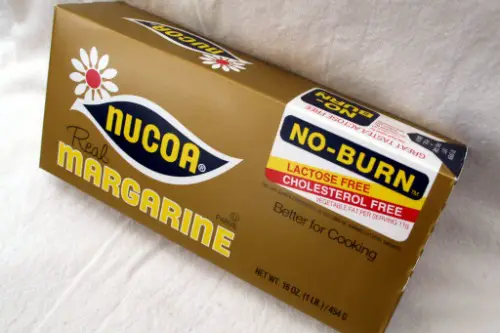
Butter was heavily rationed during WWII, so margarine stepped in as its thrifty, spreadable cousin. Originally made from animal fats and later vegetable oils, margarine was easier to produce and didn’t require the same resources as dairy butter, according to Marlena Williams from Smithsonian Magazine. The government even promoted its use through wartime cookbooks and public service campaigns. For families trying to stretch their food rations, margarine became a lifesaver.
Over time, margarine carved out a permanent place at the American table. Even after butter became more available, many stuck with margarine out of habit or preference. Manufacturers improved the flavor and texture, and margarine became a common ingredient in baking and cooking. What started as a wartime workaround turned into a supermarket mainstay.
2. Powdered Milk

Powdered milk rose to prominence during WWII, when dairy supplies were tight and refrigeration wasn’t always an option, according to Megan Harris from the Library of Congress. The government encouraged families to use it as a substitute for fresh milk, especially for children and in baking. It was lightweight, didn’t spoil, and could be stored for long periods—perfect for both soldiers and civilians. Home cooks learned to incorporate it into everything from cakes to sauces.
After the war, powdered milk didn’t disappear—it became a kitchen standby. It showed up in schools, food aid programs, and recipes designed to stretch budgets. While it’s not a glamorous ingredient, its wartime roots made it a quietly dependable staple. Even now, it’s lurking in many a pantry, just waiting for its moment.
3. Spam
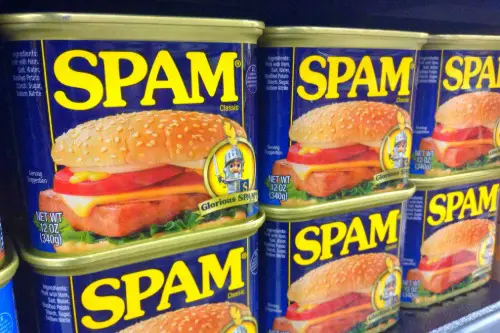
Spam became a household name during World War II, thanks to its long shelf life and easy transport, according to Ayalla A. Ruvio from Smithsonian Magazine. The U.S. military relied on it to feed troops stationed all over the world, and over 150 million pounds were shipped overseas. Back home, civilians got used to cooking with Spam because fresh meat was rationed and often hard to come by. It was cheap, salty, and versatile—everything a wartime pantry needed.
Even after the war, Spam stuck around, becoming a nostalgic favorite for many families. Its quirky reputation and convenience helped it survive long past the rationing era. You’ll still find it in plenty of kitchens, especially in areas like Hawaii, where it became part of the local cuisine. Spam might be a punchline to some, but it’s a serious symbol of wartime resilience.
4. Victory Garden Produce
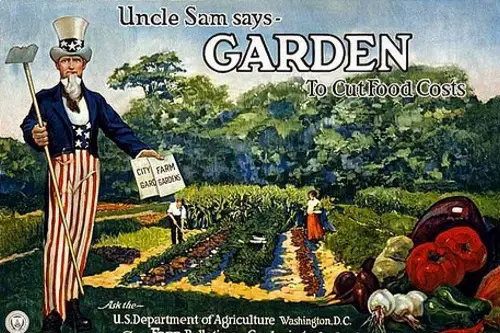
During WWII, Americans were encouraged to grow their own food to ease pressure on the commercial food supply, according to Jennifer Steinhauer from The New York Times. These “Victory Gardens” sprouted up in backyards, schoolyards, and even city parks, producing tons of fruits and vegetables. Crops like tomatoes, carrots, and beans became especially popular because they were easy to grow and preserve. Families got creative with canning and freezing to make the harvest last.
That connection to homegrown food never really went away. Many families continued gardening long after the war, and those skills were passed down through generations. It sparked a national appreciation for seasonal eating and self-sufficiency. Even today’s backyard tomato plants owe a little something to the wartime garden craze.
5. Peanut Butter
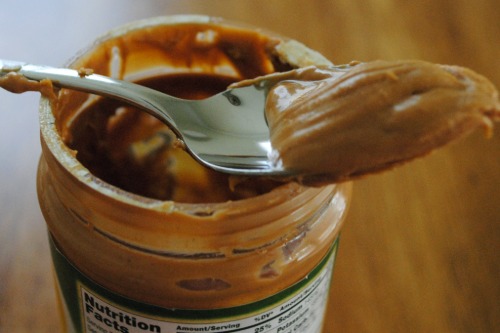
Peanut butter became a go-to protein source during WWII, especially when meat was scarce or expensive, according to Kate Wheeling from the Smithsonian Magazine. It was cheap, didn’t need refrigeration, and packed a punch nutritionally. Soldiers were given peanut butter in their rations, and families at home found it worked well in sandwiches, cookies, and even savory dishes. It was one of the rare foods that kids and adults both seemed to enjoy.
After the war, peanut butter’s popularity only grew. It became a staple in school lunches, a key ingredient in desserts, and a classic pairing with jelly. Brands improved their formulas, making it smoother, sweeter, and more shelf-stable. A wartime solution became a lifelong pantry essential for millions of Americans.
6. Dried Eggs
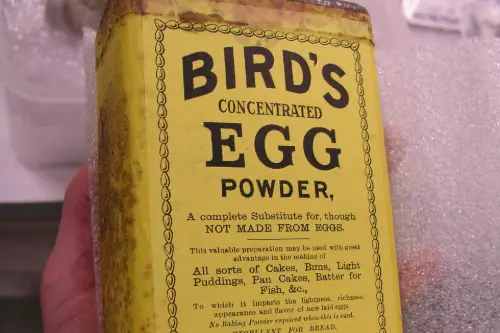
With fresh eggs in short supply during WWII, dried or powdered eggs became an important substitute. These were made by spray-drying real eggs and packaging the powder in cans for long-term storage. People used them for baking, cooking, and breakfast when fresh eggs were rationed or unavailable. They weren’t exactly delicious on their own, but they worked well in recipes.
Though not commonly used by the average household today, dried eggs are still big in the military and for emergency food kits. During the war, they taught home cooks how to adapt and innovate under pressure. Recipes from the era often included instructions for both fresh and powdered eggs. The idea of food flexibility during hard times left a lasting legacy.
7. Casseroles
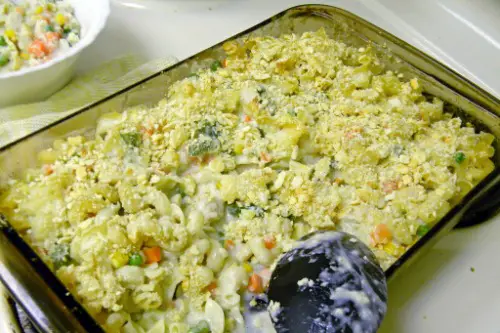
Casseroles became wildly popular during wartime because they were a smart way to stretch limited ingredients. Families could use a bit of protein, some starch, and canned vegetables to create a hearty, filling meal. Recipes like tuna noodle casserole or “hot dish” popped up everywhere during the 1940s. They were easy to make, used shelf-stable ingredients, and made leftovers more appealing.
After rationing ended, casseroles didn’t go away—they multiplied. Cookbooks in the ’50s and ’60s embraced them, thanks in part to the popularity of convenience foods like canned soup. They became synonymous with comfort food, potlucks, and busy weeknights. What started out of necessity turned into an American culinary tradition.
8. Jell-O
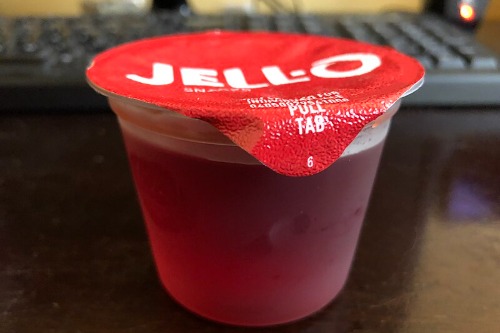
Jell-O really came into its own during wartime as a dessert that didn’t require baking or fresh ingredients. Sugar was rationed, but Jell-O came pre-sweetened, and it could turn canned fruit or leftover bits into something fun. Women’s magazines were full of recipes for molded salads and Jell-O-based dishes that looked impressive but were cheap and easy to make. It added a bit of color and whimsy to otherwise bleak menus.
After the war, Americans didn’t let go of their love for Jell-O. It became a fixture at family gatherings, church potlucks, and school cafeterias. The brightly colored molds became a cultural phenomenon in the ’50s and ’60s. Wartime made it popular, but nostalgia kept it on the table.
9. Instant Coffee
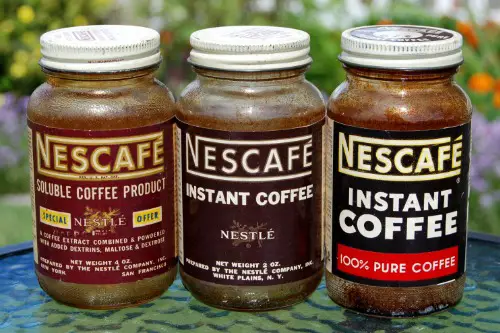
Instant coffee was a godsend during WWII, especially for troops stationed overseas. It was lightweight, easy to prepare, and offered a morale-boosting cup of caffeine when fresh coffee wasn’t an option. Brands like Nescafé ramped up production for the military, and soldiers brought the habit home. For many Americans, instant coffee was their first introduction to daily caffeine.
After the war, it stuck around as a convenient option for busy mornings. While it never fully replaced fresh-brewed coffee, it carved out a niche that’s still going strong. Office break rooms and camping trips owe a lot to that wartime caffeine fix. It may not be fancy, but it’s dependable—just like the era it came from.
10. Cornbread
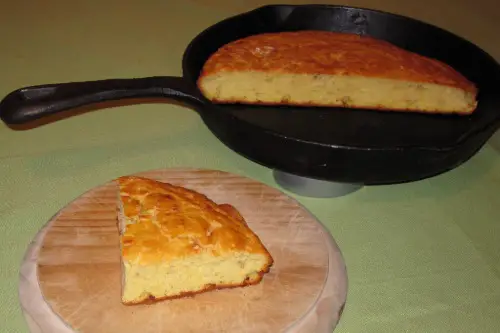
Cornbread became more popular during wartime when wheat flour was rationed and cornmeal was more readily available. It was already a Southern staple, but the rest of the country started embracing it as an economical bread option. It could be made quickly with minimal ingredients, and it paired well with all kinds of meals. From skillet breads to muffins, cornbread made a comeback in American kitchens.
Even after flour restrictions eased, people kept baking cornbread out of habit and taste. It became a classic side dish, especially for chili, stews, and barbecue. The war gave it national exposure, and comfort food status sealed the deal. Today, it’s hard to imagine American cuisine without a crumb of it.
11. Meatloaf

Meatloaf thrived during WWII because it was the ultimate way to stretch limited meat supplies. Home cooks could mix in breadcrumbs, oats, or even grated vegetables to bulk up small portions of ground beef. It was easy to prepare, hearty, and comforting—a perfect morale booster when resources were tight. The government even promoted it in wartime recipe pamphlets as a smart way to conserve.
After the war, meatloaf remained a favorite for busy families looking for an affordable, filling dinner. It evolved with time—getting dressed up with ketchup, cheese, or new spice blends. The humble meatloaf became a symbol of post-war domestic life. Its wartime roots are still part of why it’s loved today.
12. Canned Soup
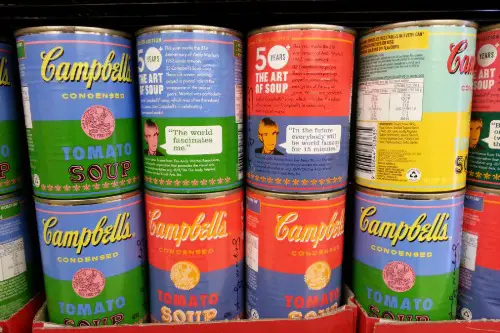
Canned soup exploded in popularity during WWII thanks to its convenience, shelf life, and affordability. With fresh produce and meat harder to get, soup offered a filling, low-cost way to make a meal. It was easy to ship, easy to store, and could be dressed up with rice, noodles, or whatever you had on hand. Brands like Campbell’s became household names during this period.
Post-war, canned soup continued to play a central role in American cooking. It became not just a meal, but an ingredient in countless casseroles and one-pot dishes. That wartime habit of using soup as a shortcut stuck around in a big way. Even now, a can of cream of mushroom soup is practically a time machine back to 1940s kitchens.
13. Macaroni and Cheese

Mac and cheese may seem like the ultimate comfort food, but its widespread popularity can be traced back to wartime rationing. Kraft introduced its boxed version in 1937, and during WWII, it became a go-to meal when fresh cheese and meat were hard to come by. It was quick, cheap, and kid-friendly—basically everything a wartime meal needed to be. The government even endorsed it as a smart option for families on a tight ration budget.
Once the war ended, Americans didn’t stop loving their boxed mac. It became a staple of weeknight dinners, school lunches, and late-night cravings. Its convenience and nostalgic flavor kept it firmly in rotation. Thanks to the war, mac and cheese became one of America’s most iconic dishes.


